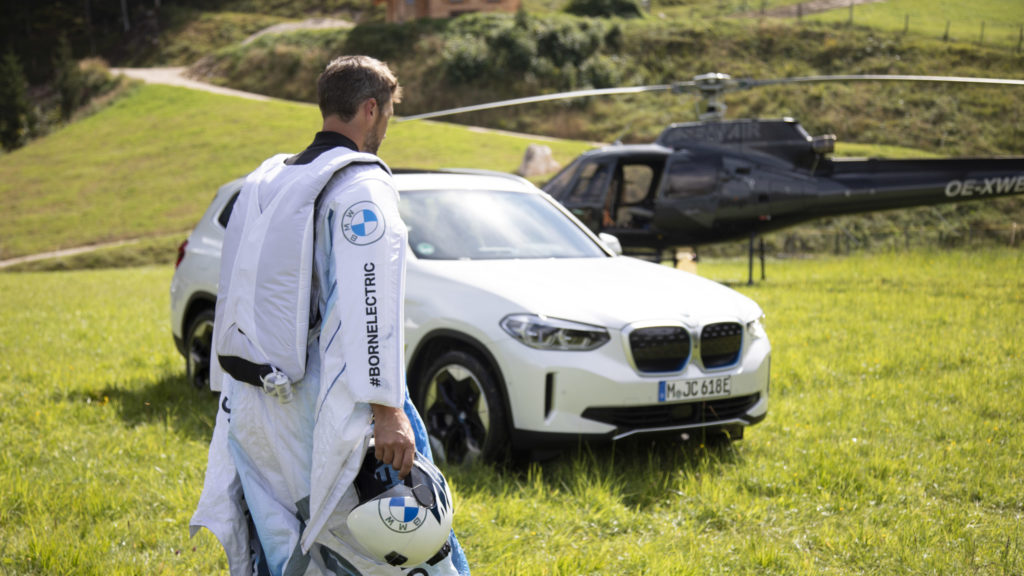It’s been said that modern wing suit represents the pinnacle of human flight. Perhaps the most unadulterated way of slipping the surely bonds of earth, achieving flight with a wing suit uses the human body as the underling structure, and combines this framework with state of the art lightweight materials to form a type of lift-generating wing. Manipulating control is achieved by moving one’s limbs, and although there is no traditional wingspan with which to gain altitude, the entire rig does seem to have been originally inspired by a bat.
A form of unpowered flight—until recently—the process involved with using a wing suit typically means jumping from a high mountain peak, or skydiving from an airplane or helicopter. Like skydiving though, the entire process is over in just a few minutes. The longest recorded wing suit flight in terms of elapsed time is just nine minutes and six seconds, as a human can only glide using a wing suit for so long, and it’s nearly impossible to use the efficiency of the design to actually climb, and gain altitude. There have been a handful of examples of individuals powering specially-designed wing suits with jet engines or rocket motors, but these designs have encountered serious limitations, and often end up with an experience quite different than the liberating feeling of using a traditional, unpowered wing suit.
Recently, BMW, in cooperation with BMW i and the automaker’s own California-based Designworks, achieved the first wing suit flight to be aided be electricity with an in-house design.
The brainchild of professional Austrian BASE jumper and wing suit flyer Peter Salzmann, who has made his life about flying, the first electrified wing suit started as a solution to a problem. Salzmann had discovered new jumping locations in his native country, but they weren’t the type which would allow safe flight with a conventional wing suit. The Austrian wanted fly longer, but while maintaining the characteristics of the wing suit, something that had not yet been done with current and previous powered designs. Salzmann eventually got in touch with BMW i, and things took off from there.
BMW i, BMW DesignWorks, and Salzmann worked together to develop a new electric motor system for wing suit flyers. Specific details of the design have yet to be divulged, but electrical engineers and material experts helped to create what appears to be a system using an electric motor to drive a pair of impellers housed in a composite nacelle which is strapped to the chest of a wing suit pilot. The design was focused on being compact and lightweight, and the first manned test flights were performed in a specialized wing suit wind tunnel in Stockholm, Sweden. Afterword, plans were formulated for Salzmann to jump from a helicopter in Busan, South Korea, and to then fly over the two 85-story residential towers of the Haeundae LCT The Sharp skyscraper complex, and then the third 101-story structure, by using the electric impeller design to boost upward and gain altitude.
Before this feat could take place though, things changed, and the novel human coronavirus outbreak meant Salzamann and BMW i had to make new plans. This meant coming up with a new flight plan for accomplishing something similar in the Austrian Alps, where Salzmann would use the high mountain peaks to demonstrate the capabilities of the electrified wing suit.
BMW has chronicled the entire process in a pair of episodes on its main YouTube channel. The first episode (below) covers the groundbreaking flight itself, with Salzmann and two other wing suit jumpers flying in formation before Salzmann breaks off, powers on the electric motor for his wing suit, and soars over a third, higher peak. The entire thing is exhilarating to watch, thanks not only to high production quality and great camera angles, but also because giving power to a wing suit by way of a lightweight electric motor design allows it to behave like a significantly more capable modern fighter jet, with speed and precision we otherwise don’t see. If you want to learn more about the inspiration, design, and engineering of the wing suit and electric motor pod itself, it’s covered in greater depth in the second episode, which also features Peter Salzmann narrating.—Alex Tock
[Photos and video courtesy BMW AG.]
